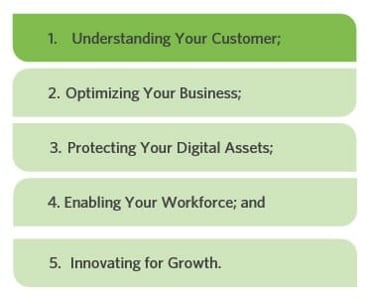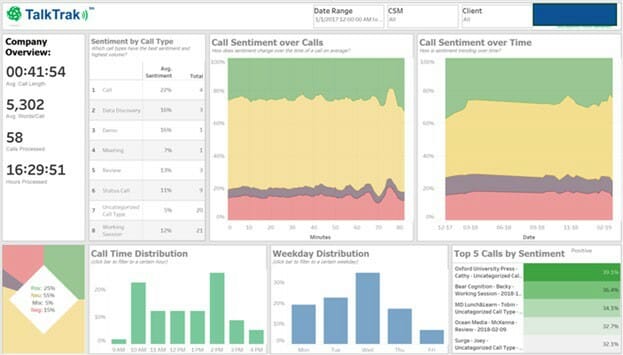A Five-Part Series
The last 16-months of dramatic change driven by the global COVID-19 pandemic has placed a spotlight on key business outcomes and accelerated Digital Transformation in Architecture and Engineering (A&E) firms. Each of these outcomes, coupled with how people and processes can be empowered digitally through the application of technologies, will be explored in this five-part series for firms. The series aims to provide insights into the five critical business outcomes:

Part I: Understanding Your Customer
Client relationships have always been the cornerstone of A&E firms with face-to-face interaction being viewed as the critical component to success. The current environment has seen significant adaptation to quickly supplant the traditional means and explore digitally enabled ways to facilitate engagement. The pivot from in-person to video conference, whiteboards to online collaboration and events to webinars has driven significant change in client touchpoints. These changes have driven an unparalleled need to accelerate efforts in Digital Transformation within firms. Digital Transformation strategies represent more than the implementation of new technology platforms. It represents a deliberate direction to organizational change. This change is only achieved by empowering people with digital solutions dedicated to effective and efficient processes.
This paradigm shift for the overarching professional services industry has positioned them as leaders to digitally transform. A recent trends survey conducted by Salesforce.com of 655 professional services sales leaders (Trends in Professional Services, November 2020) shows professional services firms are 13% more likely to have accelerated their digital transformation efforts to meet the new demands of customers. Additionally, their historical emphasis on a comprehensive client experience drives the need to facilitate digital tool adoption and usage. The study further showed leading professional services groups staying ahead of the curve in key emerging technologies like Artificial Intelligence (AI) and Automation.
Many companies have made a successful shift to mission critical digital tools such as video conferencing, instant message and account management platforms. The dynamics of the changing environment also places additional emphasis on other key digitally transformational tools. The need to understand the impact of new client touchpoints and engagements are leading to an increased focus on the areas of analytics, forecasting, content collaboration and automation.
The rush to pull together analytics to gain insight into rapidly changing customer behaviors and define the “new” normal is driving the need for citizen-based digital tools (Tableau, Alteryx, PowerBI). This change allows for the upskilling of a firm’s team to ask and answer deeper questions, go to market more effectively and to exceed client expectations. The sample visual below depicts leveraging of analysis of client interactions at a consulting firm.
The analysis takes advantage of AI for the transcription and sentiment analysis of client conversations. A review of the information can provide insight to client satisfaction, consultant performance, trending topical areas across clients and other operational metrics. Opportunities to leverage platforms for predictive and prescriptive modeling help extend analytics to forecast client trends resulting in a transformative level of engagement in professional service firms.
The implementation and optimization of collaboration and automation platforms span the chasm created in the shift from in-person to virtual. Using collaboration platforms (Sharepoint, Mural, etc.) firms can brainstorm, edit/revise/version control, comment and receive feedback in real time to replicate the feel of the conference room or site visit and avoid the inefficiencies of endless email chains. The adoption of automation platforms is creating competitive advantages to deliver more effectively for clients. Firms are taking advantage of tools in their existing toolbox to automate everyday tasks within the Microsoft 365 suite using the power platform. Firms are also extending their capabilities with more advanced Business Process Automation or Robotic Process Automation platforms.

Ultimately the confluence of digital tools and enhancement of processes endow A&E firm’s team members with the capability to drive a higher-level of satisfaction in every client interaction and deliverable.
To learn more about how Cherry Bekaert can assist in your Digital Transformation visit us here.
Related Insights
- Digitally Driving Business Outcomes (A 5 Part Series) – Part 2: Optimizing Your Business
- Digitally Driving Business Outcomes (A 5 Part Series) – Part 3: Protecting Your Digital Assets
- Digitally Driving Business Outcomes (A 5 Part Series) – Part 4: Enabling Your Workforce
- Digitally Driving Business Outcomes (A 5 Part Series) – Part 5: Innovating for Growth




